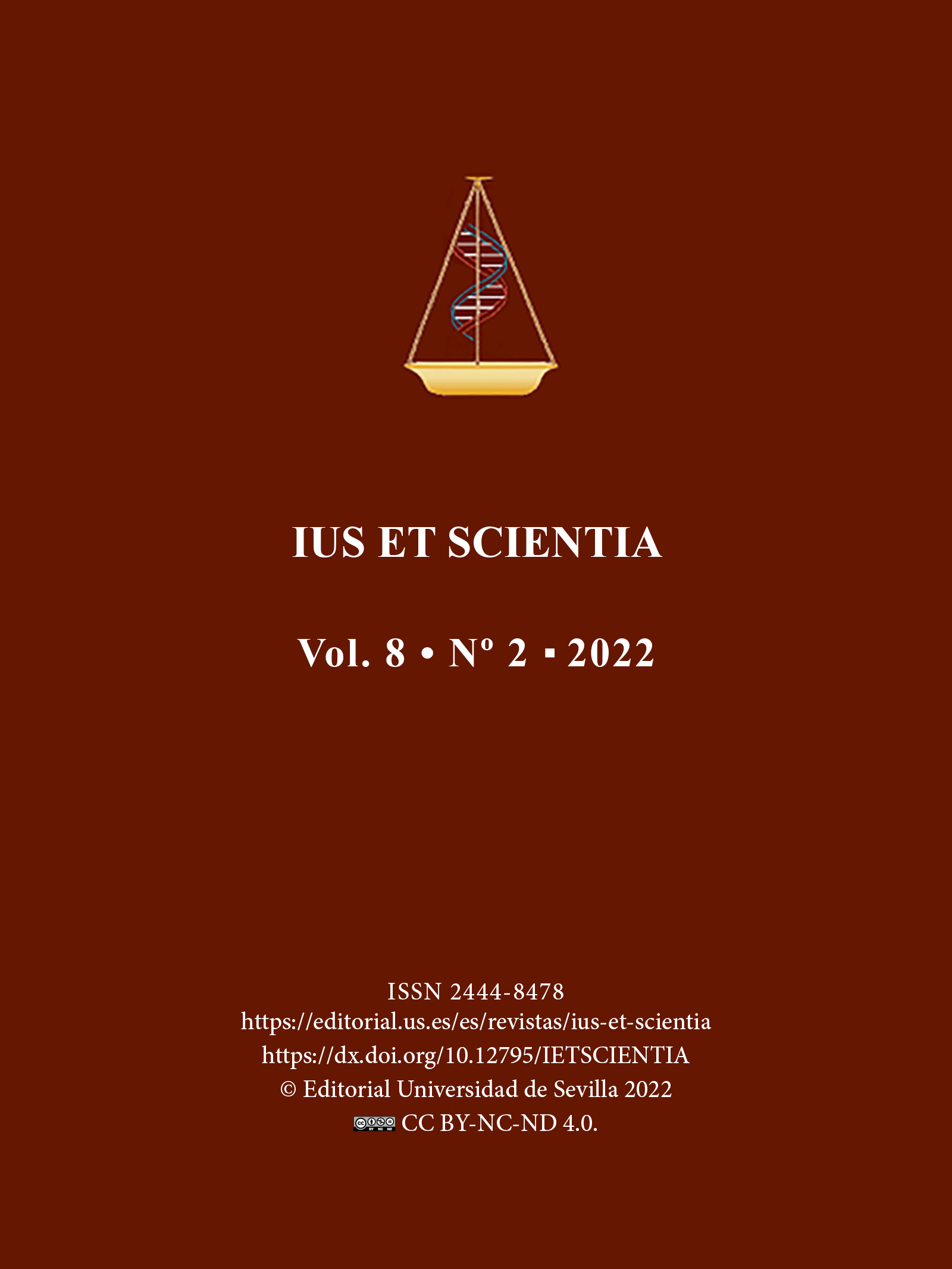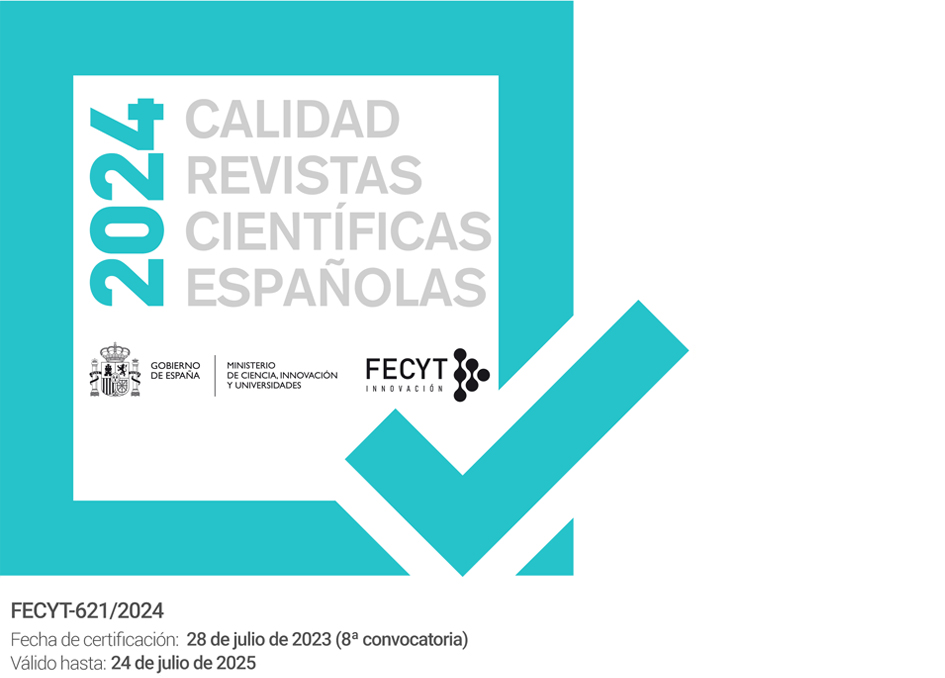Euthanasia, artifial intelligence and robotics
DOI:
https://doi.org/10.12795/IESTSCIENTIA.2022.i02.03Keywords:
Euthanasia, Autonomy of the will, Artificial intelligence, Robotics, EthicsAbstract
Law 3/2021 of March 24 (LORE) that regulates euthanasia has given rise to a controversy that is difficult to manage because it makes use of the monopolization of the medical profession for one purpose, euthanasia, which is not strictly sanitary, in the sense to care when the person can no longer be cured. This regulation of euthanasia is creating “discomfort” among medical professionals, who can see how AI and robotics can easily replace it. Indeed, the most complex moment for the “responsible doctor” will be to calibrate the conditions for admission or rejection of this Aid to Die (PAM) benefit, according to the imprecise conditions established by the law in the “euthanasia context”. I foresee that Artificial Intelligence can register, order, and stablish algorithms in which not only biometric constants are present, but also other patient data recorded in the medical record to grant, or not, this benefit with a more exact objectivity than the mere ideological perspective, or the exclusive sensitivity of the “responsible doctor” for initiating the administrative file of euthanasia.
Another part of the legal procedure of LORE that reject the medical profession is the execution of Aid to Die benefit (PAM). Thus, in places where assisted suicide is a more present reality than in our society, and where robotic technology is much more advanced, robots can soon be found that can carry out the entire process of applying euthanasia without any medical supervision. The present paper supposes an ethical approach to this reality, understanding the normative fit that it would suppose in our (Spanish) legal system and values the ethical conditions that would imply.
Downloads
References
A.E.B.I. (Asociación Española de Bioética y Ética Médica); “ante la entrada en vigor de la Ley Orgánica de regulación de la eutanasia en España”, Cuadernos de Bioética, 32 (septiembre, 2021), 365-366.
ANDERSON, M; Machine Ethics, Cambridge University Press, New York, 2011.
ASIMOV, I; “Runaround – A short story”, Astounding Science Fiction, (march, 29, 1942).
BARRIO ANDRÉS, M., “Aspectos jurídicos de la robótica: hacia un derecho de los robots o Lex robótica”, Derecho de los riesgos tecnológicos, Eolas, León, 2021, 23-58.
BELLOSO, N; “La problemática de los sesgos algorítmicos (con especial referencia a los de género). ¿Hacia un Derecho a la protección contra los sesgos?”, Inteligencia artificial y Filosofía del Derecho, Laborum, Murcia, 2022, 45-78.
BELTRÁN AGUIRRE, J. L; “Desencuentro entre la deontología médica y el derecho positivo en torno a la prestación de la ayuda a morir”, Derecho y Salud, 32, (junio, 2022), 6-11.
COLEGIO ANDALUZ DE COLEGIOS MÉDICOS, “Comunicado: ‘La eutanasia no es un acto médico’”, 7 abril 2022, en: https://cacm.es/2022/04/07/la-eutanasia-no-es-un-acto-medico/
COMITÉ DE BIOÉTICA DE ESPAÑA [CBE]; “Informe del Comité de Bioética de España sobre la objeción de conciencia en relación con la prestación de ayuda para morir de la Ley Orgánica reguladora de la Eutanasia”, <http://assets.comitedebioetica.es/files/documentacion/Informe%20CBE%20sobre%20la%20Objecion%20de%20Conciencia.pdf>, 21 de julio de 2021, (último acceso 6 septiembre 2022).
COMISIÓN EUROPEA, Libro blanco sobre la inteligencia artificial. Un enfoque orientado a la excelencia y a la confianza, Bruselas, 2020, <https://ec.europa.eu/info/sites/default/files/commission-white-paper-artificial-intelligence-feb2020_es.pdf.>
FERREIRA, A. E; “Antropogenia, principios normativos y ética artificial”, Inteligencia Artificial y Derecho. El jurista ante los retos de la era digital, Thomson Reuters – Aranzadi, Cizur Menor, 2021, 91-112.
GARRIDO MARTÍN, J; “Inteligencia artificial y cultura tecnológica. Hacia una técnica fragmentada”, ”, Inteligencia artificial y Derecho. El jurista ante los retos de la era digital, Thomson Reuters – Aranzadi, Cizur Menor, 2021, p. 153-167.
ITURMENDI MORALES, G., “Ética de las nuevas tecnologías”, Derecho de los riesgos tecnológicos, Eolas, León, 2021, 61-91.
LLANO ALONSO, F. H; Homo Excelsior. Los límites ético-jurídicos del transhumanismo, Tirant lo Blanch, Valencia, 2018.
MIKKELSON, D; “Japanese Engineers Design Robotic Bear to Aid in Assisted Suicide?” en: https://www.snopes.com/fact-check/seppukuma/
MORAVEC, H; Mind Children: The future of Robot and Human Intelligence, Harvard University Press, Cambridge, 1988.
MORAL SORIANO, L; “Modelos de gobernanza global de la inteligencia artificial”, Inteligencia Artificial y Derecho. El jurista ante los retos de la era digital, Thomson Reuters – Aranzadi, Cizur Menor, 2021, 235-258.
ORGANIZACIÓN MÉDICA COLEGIAL – CONSEJO DE COLEGIOS DE MÉDICOS, “Científicos proponen el uso de indicadores médicos para determinar la esperanza de vida de las personas” en: http://www.medicosypacientes.com/articulo/cientificos-proponen-el-uso-de-indicadores-medicos-para-determinar-la-esperanza-de-vida-de
ORGANIZACIÓN MÉDICA COLEGIAL – CONSEJO DE COLEGIOS DE MÉDICOS, “El juramento médico se actualiza e incorpora, por primera vez, la autonomía del paciente”, en: http://www.medicosypacientes.com/articulo/el-juramento-medico-se-actualiza-e-incorpora-por-primera-vez-la-autonomia-del-paciente
PARLAMENTO EUROPEO, “Resolución del 3 de mayo de 2022 sobre la inteligencia artificial en la era digital” (2020/2266 (INI)), https://www.europarl.europa.eu/doceo/document/TA-9-2022-0140_ES.html.
PEDRAZA, L; “Eutanasia robótica” en: http://luispedraza.es/2008/03/23/eutanasia-robotica/
PÉREZ LUÑO, A. E; “La inteligencia artificial en tiempo de pandemia”, Inteligencia artificial y Derecho. El jurista ante los retos de la era digital, Thomson Reuters – Aranzadi, Cizur Menor, 2021, 33-50.
SCHWARTZ, W. B; “Medicine and Computer: The promise and Problems of Change”, New England Journal of Medicine, 283 (dic, 1970), 1257-1264.
SAVINI NICCI, M. / VETRUGNO, G; “Intelligenza artificiale e responsabilità nel settore sanitario”, Intelligenza artificiale. Il diritto, i diritti, l’etica, Giuffrè, Milano, 2020, 601-618.
TORRE, (de la) DÍAZ, J; “Eutanasia y suicidio asistido. Razones para pensar”, Y de nuevo la eutanasia. Una mirada nacional e internacional, Dykinson, Madrid, 2019, 15-52.
VAN EST, R. / JOOST GERRITSEN / LINDA KOOL, “Human Rights in the robot age. Challenges arising from the robotics, artificial intelligence, and virtual and augmented reality”, Rathenau Instituut, The Hague, 2017.
WAELEN, R; “AI and manipulation: the ethical question”, Rathenau Instituut, https://www.rathenau.nl/en/digital-governance/ai-and-manipulation-ethical-questions, 8 april 2022, (ultimo acceso, 6 septiembre 2022).
WISNER GLUSKO, D. C., “Breves reflexiones sobre la importancia del Estado de Derecho en el desarrollo del marco legal sobre los sistemas de Inteligencia artificial en la Unión Europea”, Inteligencia Artificial y Derecho. El jurista ante los retos de la era digital, Thomson Reuters – Aranzadi, Cizur Menor, 2022, 529-548.
WOOD MAK, Y. Y – ELWYN, G; “Voices of the terminally ill: uncovering the meaning of desire for euthanasia”, Palliative Medicine, 19, (Junio, 2005), 343-350.
Published
How to Cite
Issue
Section
License
Copyright (c) 2022 Ramón Darío Valdivia Jiménez

This work is licensed under a Creative Commons Attribution-NonCommercial-ShareAlike 4.0 International License.
Those authors being published in this journal agree to the following terms:
- Authors retain their copyright and they will guarantee to the journal the right of first publication of their work, which will be simultaneously subject to license recognition by Creative Commons that allows others to share such work provided it is stated the author’s name and his first publishing in IUS ET SCIENTIA.
- Authors may take other non-exclusive distribution license agreements version of the published work (e.g. deposit in an institutional digital file or publish it in a monographic volume) provided it is stated the initial publication in this journal.
- It is allowed and encouraged that Author s disseminate their work via the Internet (e. g. institutional digital files or on their website) prior to and during the submission process, which can lead to interesting exchanges and to increase citation of the published work.
- Abstract 1227
- PDF (Español (España)) 430
- HTML (Español (España)) 125





